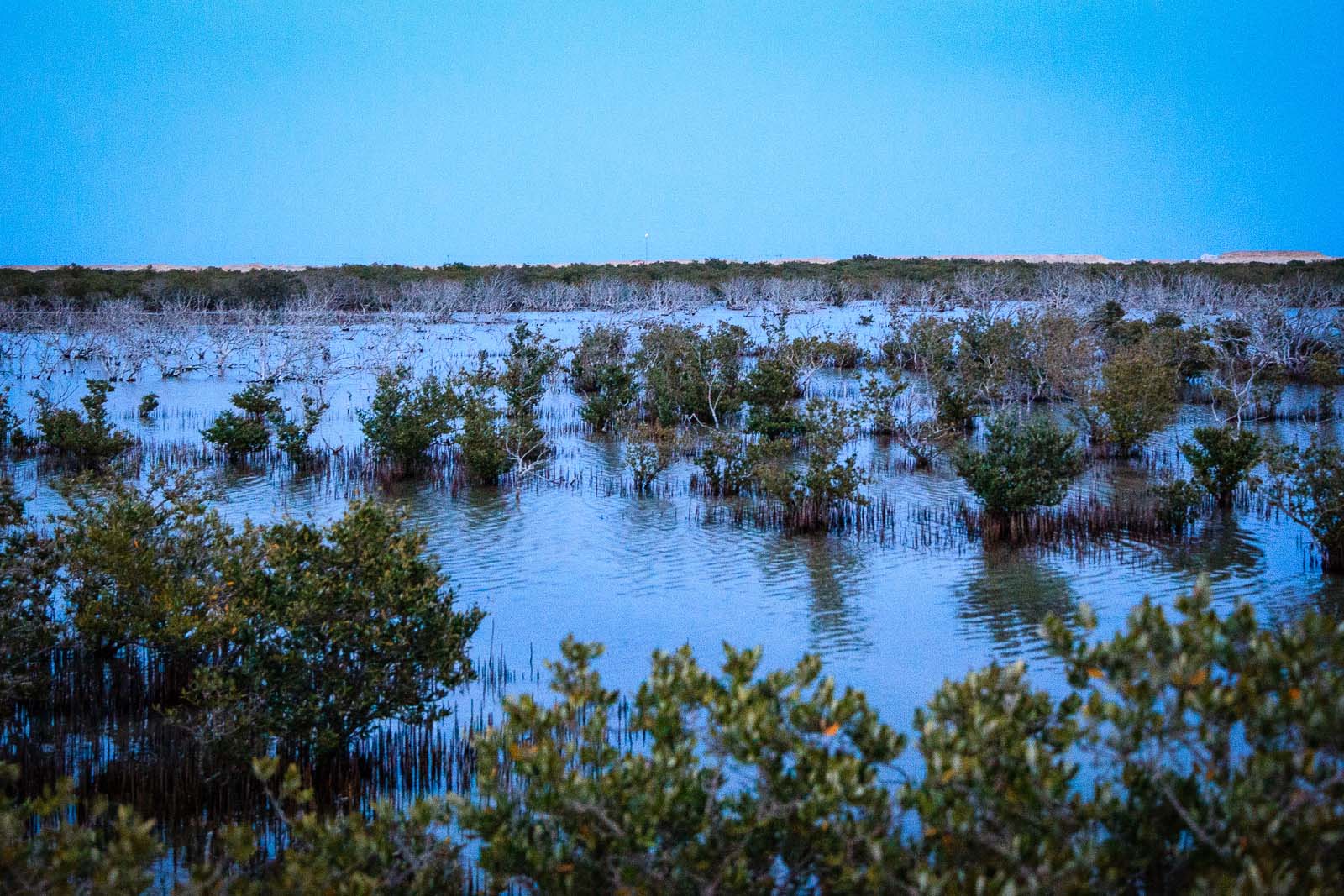This figure includes 6,000 seedlings planted in the Al Ghashamiya Center and a further 3,000 in the Al Thakhira Marine Nursery.
The Qatari Ministry of Environment and Climate Change (MoECC) has revealed that so far in 2024, it has planted a total of 9,000 mangrove seedlings in the Gulf state.
This includes 6,000 seedlings in the Al Ghashamiya Center and a further 3,000 in the Al Thakhira Marine Nursery, the ministry announced on Tuesday.
“The mangrove tree is one of the most important plants in the Qatari environment, so the State of Qatar has been keen to give them special importance in their care and preservation,” the ministry’s statement said.
The ministry has also established a new marine nursery in the coastal village municipality of Fuwairit.
Marine nurseries are designated habitats for juveniles of a particular species. The nurseries contribute to the population growth by increasing the number of the species’ adults on a per-unit-area basis.
Meanwhile, mangrove ecosystems store significant amounts of carbon in their soil, their leaves and branches. One hectare of mangroves alone can store upwards of 3,754 tonnes of carbon. This is the equivalent of taking over 2650 cars off the road for a year.
The plants thrive abundantly in Qatar’s Al Khor and Al Thakhira regions, with Qatari Law No. 6 of 2006 designating the latter as a wildlife reserve. Mangroves have also successfully been cultivated in areas such as Al Ruwais, Um Al Houl, Fuwairit and Ras Al Matbakh.
Last year, a deal was inked between the Earthna Center for a Sustainable Future (Earthna), Qatar University and the MoECC to establish the National Program to Conserve Qatar’s Coast Ecosystems.
“The objectives of this national program to conserve coastal ecosystems aligns with the Ministry’s strategy and vision to increase the number of trees in Qatar and to rehabilitate ecosystems,” Sheikh Faleh bin Nasser Al Thani, the former minister of the environment and climate change department, said at the signing ceremony.
This multi-year agreement aims to conserve, restore and nurture Qatar’s mangroves, as well as its forests, seagrass and coral reefs. Researchers will also examine how these plant ecosystems interact symbiotically to identify how to best support the country’s marine biodiversity and strengthen Qatar’s sustainable research sector.







